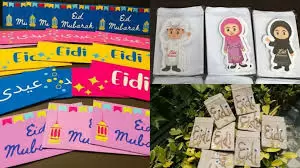
Eid has always been a festival of joy, togetherness, and tradition. Those who have experienced it in its truest form can best describe how it used to be—full of warmth, family gatherings, and heartfelt interactions. In the past, children would wake up early, excitedly dress in their new clothes, and head to the Eidgah for prayers. The air would be filled with the aroma of home-cooked delights like seviyan and biryani, and after prayers, people would embrace each other, exchanging greetings and best wishes.
Back then, Eid was not just about celebration—it was about strengthening relationships. Families would visit one another, spending quality time together. One of the most cherished traditions was gathering at a single house for meals. If lunch was prepared at one relative’s home, dinner would be hosted by another. This beautiful custom ensured that family ties remained strong, and love and laughter filled the air.
However, modern Eid tells a different story. The influence of technology has transformed how we celebrate. Instead of visiting loved ones, most people now send Eid greetings over WhatsApp or post a generic message on social media. Online shopping has replaced the bustling Eid markets, and due to busy lifestyles, long, heartfelt meetings have been reduced to quick get-togethers. Dining at home has often been swapped with restaurant outings, and the intimacy of family gatherings has faded.
Also Read: Women in Marketing: Opportunity or Exploitation?
As children, we eagerly looked forward to collecting Eidi and carefully planned how to spend it. The house that gave the most Eidi was naturally our first stop! Those small amounts of money brought immense happiness—we would pool our savings for ice cream, amusement park rides, or small gifts. Eid was incomplete without the excitement of exchanging colorful Eid cards, a tradition my cousins followed with great enthusiasm.
One of the highlights of Eid was Chaand Raat, when we would gather to apply henna, waiting impatiently for our turn. If the color didn’t turn out dark enough, it would genuinely upset us! Looking back, those moments now seem so innocent and beautiful.
With time, priorities have changed. Today’s children are no longer thrilled by a few hundred rupees of Eidi, and their expectations have grown with the times. Busy schedules make it difficult to visit family as frequently, and simple joys like a family picnic or a visit to our grandmother’s house seem like luxuries.
It feels as though the shortage of time has become a barrier to our happiness. Digital interactions now overshadow the deep connections we once had. Although many people still try to celebrate Eid with the same zeal, certain traditions are slowly disappearing.
That is why it is important to preserve these customs—to hold on to what truly makes Eid special. We should strive to bring back the warmth of old Eid celebrations, making time for our loved ones beyond just a text message. It’s also essential to remember those who are less fortunate and extend our joy to them. And above all, Eid should be a time to let go of grudges and embrace forgiveness. After all, the real essence of Eid lies in love, unity, and spreading happiness.